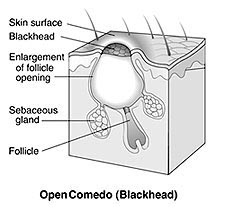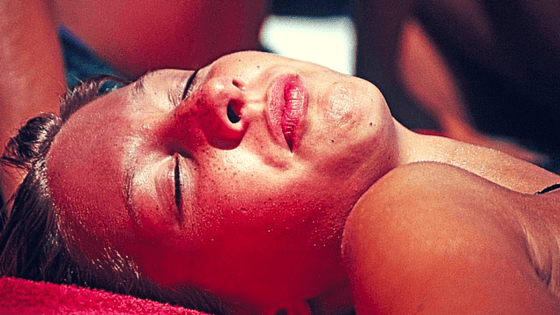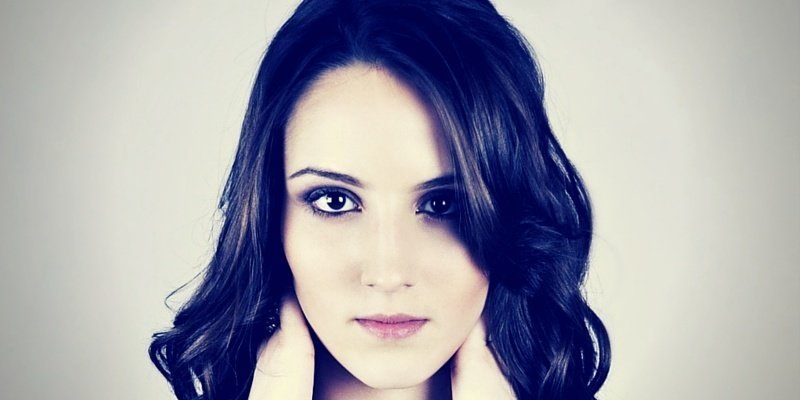Welcome to the first part of our new series called Skin Woes where we’ll be covering some of the most common skin problems and how to treat them.
Flawless skin is something everyone wants and we’re going to help you get it!
First up, we’ll be covering what’s likely the most hated skin woe around: acne. Ultimately this guide will not only educate you about acne but also help you take control over it and get you one step closer to attaining a perfect complexion.
It may seem far-fetched now and like we’re throwing around empty promises but we guarantee, at the very least, you’ll be able to improve upon wherever you’re currently at with your skin.
The Nature of The Beast
So… where to begin with acne? It really needs no introduction.
We all know what it looks like. Most of us unfortunately know what it’s like going out in public and not being able to shake the feeling that people are staring at you because of what’s on your face. Or waking up in the morning and finding yet another zit making itself comfy (and you miserable) on your skin.
If you want to deliver that knockout punch to acne’s face and regain your self-esteem (because let’s be honest here… telling ourselves that we accept us for who we are and all our flaws is almost like accepting defeat when in reality we have control over the issue) in order to do that — you need to really understand what you’re dealing with and you’re going to need a plan.
But first…
Who Gets Acne & How Common Is It?
Please make no mistake about it — acne is a serious problem. It’s technically classified as a disease and it’s one that hundreds of millions of people all throughout the world are suffering through. A recent study released in 2013 reported nearly 650 million people with acne, making it the 8th most common disease in the entire world.
We don’t want anyone to feel like they’re alone in this struggle. It may seem like it sometimes because your peers might have clear skin and you don’t or you might be older and still break out even though acne is considered to be mostly an adolescent thing.
There are plenty of people in the same boat as you.
People of all races and ages can get acne because Propionibacterium acnes (also known as P. acnes), the name of the acne causing bacteria which is responsible for inflaming the skin with acne lesions is naturally found in the skin flora of many healthy adults and affects people in different ways.
Young adults and adolescents happen to be the two groups most commonly afflicted with acne although it isn’t unheard of for people in their 30s and even 40s and beyond to still struggle with break outs. We explore further why this is so in the next part of this series where we cover the causes and common triggers of acne.
This multi-part guide on acne will also explore other others topics like general prevention tips, at home and prescription treatments, as well as getting rid of post-acne scars and hyperpigmentation.
By the way we’re going to strictly be talking only about the acne that forms on your face and neck. For acne on the body check out our guide to bacne although this guide will give you a good background on bacne also.
We’ll also be keeping this page as a hub for any future acne related articles as new research inevitably comes out so you may want to bookmark this and check back occasionally. All of the links to each part will be posted at the bottom.
Now let’s quickly cover the different types of acne so you have a better idea of what you’re dealing with.
The Types of Acne
Whiteheads fall into a group of acne called “comedones” which are basically pores clogged up by sebum causing little bumps to form on your skin. Whiteheads are the “closed” type of comedone because the follicle is completely blocked. This means air can’t reach the sebum trapped inside so it avoids oxidation and keeps it’s white color, hence the name whitehead.
Blackheads are the other type of comedone and they’re known as the “open” type. Since they have direct contact with the air, the sebum becomes oxidized and turns darker in color compared to whiteheads. Both whiteheads and blackheads are among the least noticeable and easier types of acne to treat.
Comedones make up a group known as non-inflammatory types of acne. Inflammatory acne types make up the second large group and tend to be harder to treat.
Picking at comedones can break the follicular wall containing the sebum and cause inflammatory types of acne to form (which is why you should never pick at your skin).
Papules are medium-sized, and slightly raised off the skin like pimples except they don’t have any pus. This means they’re hard to the touch and feel like bumps growing out of your skin. Papules usually group together in one area.
Pustules are like papules except they do have pus. Pus is that nasty yellowish-white liquid that oozes out when you pop a pimple. These are generally what people think of when someone mentions the word acne.
Nodules are one of the larger types of inflammatory acne. Nodules are like papules in that they don’t have any pus. The difference is that the blocked pore has become even more irritated, swelling to a larger size. They are also more deeply rooted into the skin making them a pain to remove and they usually look like large reddish bumps.
Cysts are another large type of inflammatory acne and they have the worst reputation in terms of wrecking your appearance and making you feel like being anti-social. Cysts are like nodules except they are filled with pus and are softer to the touch. Cystic acne is no joke and will likely require stronger types of treatment compared to other forms of acne.
Knowing the type(s) of acne you have will help you treat your individual case more effectively. Some treatments work better for comedones and won’t do much for cysts. Some will absorb the pus off a pustule but won’t do anything for nodules which don’t have any pus. We’ll talk about this more when we go over the best treatments available for acne.
Conclusion
So here’s what’s coming up next in this guide. We recommend going in chronological order by moving on straight down the list but it was also designed so anyone can start reading from anywhere to address whatever stage of acne they’re currently at.
We’ve also interlinked many of the pages so if you missed something from an earlier part that you want to read more about you can quickly head back to it.
The Briefing:
What Causes Acne? Common Triggers To Look Out For
Get Your Acne Under Control: Tips To Stop Breakouts
The Battleground:
Acne Spot Treatments Review: Solutions To Vanish Pimples
Prescription Acne Treatments Review: The Best and Worst Acne Medications
The Aftermath:
How To Treat Post-Acne Hyperpigmentation and Scars
If you have any specific questions or topics you’d like us to talk about in regards to acne don’t be afraid to ask! This is an ever expanding hub on acne related topics and we’d like your input to help guide it.
—
Featured Image by Caitlin Regan // Cropped & Filtered Original






